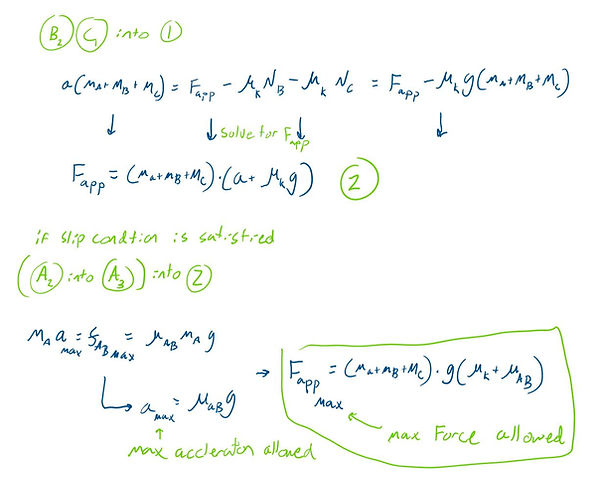Stacked and chained Blocks
A typical introduction to problems with multiple connected bodies accelerating is usually described with a tuck pulling a trailer with something stacked on top only held by friction, in physics land, it's 2 blocks stacked on one another with a tension attached to another that can transmit force, looking something like this. The main constraints of the system are that all 3 must have the same acceleration, and the static friction between A and B must be below the maximum.

The unknown variable could be the maximum force to slip, the minimum mass of block A, applied force, or several other variables. The free body diagrams and equations of motion are the same for any of these variations.

Because all the bocks have the same acceleration we can take the sum of external forces as equal to the total mass times acceleration. The green part shows that internal forces such as tension and static friction appear twice pointing in opposing directions, they cancel out.
f_AB is the static friction between A and B, and the slip condition is usually a constraint. f_B and f_C are kinetic friction forces between the blocks and the ground, both of these should usually be defined in terms of knowns (see eqn B2, B1, C1).

Plugging B2, B1, C1 into eqn 1 (external forces), a relation between "F_app" and "a" can be found.
The boxed answer can be rearranged to solve for any of these variables as long as the slip condition is assumed.
If the applied force is less than this, the static friction is not saturated, so use eqn 1 to solve for "a" and then substitute it into any of the other equations to find your unknown varible.
